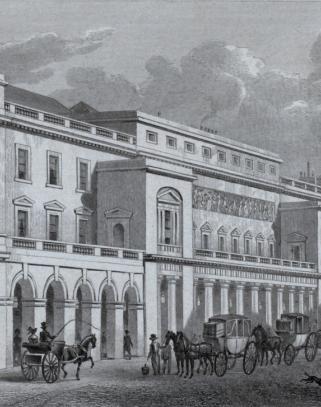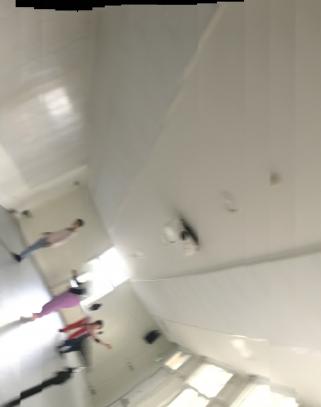While Carlotta Grisi is creating the Hamlet of ballet, mathematician Ada Lovelace is working on a project that will redefine the relationship between people and machines. Her innovation emerging alongside another technology that changes social relations, the waltz a new dance, the ¾ heartbeat of the 19th Century
To die at fifteen years, after having been scarcely one hundred times to the ball and waltzed at the most two thousand waltzes...It isn't life one regrets at fifteen, it's the ball it's love (Theophile Gautier,The Romantic Ballet as Seen by Théophile Gautier, pg.103)
Fiorucci Made Me Hardcore
Mark Leckey's seminal 1999 tape collage work of social dance from disco to rave Fiorucci Made Me Hardcore was an early model for our thinking about why we should look at the waltz. Leckey's work describing social dance as a way of resisting, dropping out and redefining mainstream culture. Fiorucci Made Me Hardcore also, like the waltz, shows dance floors as sites where gender rules and gender roles changed. Accounts of loved up, E'd up men no longer fighting but dancing together, with MDMA amplifying sensation, have parallels with Kate Flatt's description of the waltz as a world shaped by a 'heady, dizzy, delight'.
Waltz and the Wilis
In a letter to Heinrich Heine, Theophile Gautier describes the Wilis in their ballroom dancing a bacchanal, and that the dance of this bacchanal is the waltz is not surprising: Ernst Moritz Arnndt describes the waltz ' ..and thus the turning went on in the most indecent positions; the hand holding the dress lay hard against the breasts, pressing lavisciously at every movement; the girls meanwhile looked half mad and ready to swoon' (Ernst Moritz Arndt, in Curt Sac's World History of Dance, pg. 840 )
Before the waltz
The waltz emerges from a social dance called the Ländler, audiences would have recognised the coding of Giselle and her friends as peasants as they dance in groups ,the Wilis later initially dance Lander steps suggesting that like Giselle they too were once peasant girls. In the libretto however the Wilis are described as waltzing and at this point they are taking part in a social dance that unlike social dances with a focus on the group opened up a world of subjective erotic experience and daring intimacy.
The shock of the waltz
Waltz appears as a key moment in changing the destiny of a tragic heroine in both Anna Karenina and Madame Bovary. Here Emma experiences the shock of the waltz:
At three in the morning the closed cotillion began. Emma had never waltzed ...They started out slowly, then quickened their step. They whirled: or, rather, everything - lamps, furniture, walls, floor whirled around them like a disc on a spindle. As they passed close to a door the hem of Emma’s gown caught on her partner's trousers and for a moment their legs were all but intertwined: he looked down at her; she up at him, a paralyzing numbness came over her, and she stopped. Then hey resumed ; and spinning more quickly the vicomte swept her off until they were along at the very end of the gallery; there, and out of breth, she almost fell, and for a second leaned her head against his chest. Then still circling, but more slowly, he returned her to her seat. She sank back with her head against the wall, and put her hands over her eyes.
Waltz as a Weapon
The Waltz runs through Giselle, the score is full of waltz motifs: it is a waltz that Giselle's mother interrupts in Act 1 to warn of the dangers of dancing.The Wilis use the waltz as a deadly weapon when they rewrite the code of the 19th century ballroom in the most shocking way, they are not waiting to be asked to dance but rather aggressively pursue men as their prey. Gautier describes something that sounds like a military formation, a dancing wall and these formations resonate both with the ballroom and battle formations, this kind of formal structure seen in the Vienna Waltz.
Waltz continues to have currency in popular culture as a signifier of romance, tension and intimacy from ballroom reality shows to anime.




